Sustainable home updates will greatly reduce your environmental footprint and produce long-term cost savings. From energy-efficient appliances to water conservation techniques, there are countless ways to create a more eco-friendly living space. This article covers the benefits of green renovations, updates to consider, and practical tips for pulling off a successful remodel.
Table of Contents
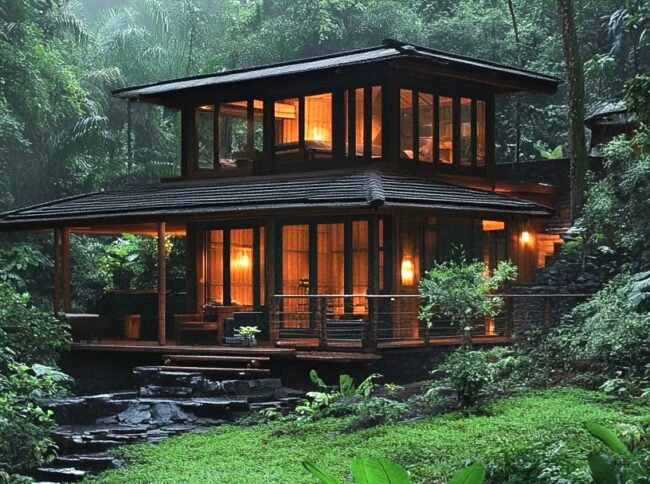
Green Home Remodeling: Best, Smart Decision and Investment with High ROI
The goal of green home remodeling is to upgrade the home’s structure and systems to be more sustainable, improve energy efficiency, and reduce environmental impact. With eco-friendly materials and smart practices, you will create a healthier living space and do your part for the planet.
This innovative approach highlights the importance of sustainable resources, such as reclaimed wood, low-VOC paints, and energy-efficient appliances. Together, they build a more resilient ecosystem. Every little step you take during the remodeling process increases comfort and adds to a global movement focused on nurturing and protecting the environment for future generations.
Benefits of Sustainable Updates
The environmental impact of green home remodeling goes far beyond your home; it’s part of a bigger movement toward sustainability and protecting our planet. When you make eco-friendly updates, like installing solar panels or choosing energy-efficient windows, you’re actively reducing carbon footprint and supporting renewable energy initiatives.
Plus, downsized waste during construction and the use of reclaimed or recycled materials minimize overall environmental impact.
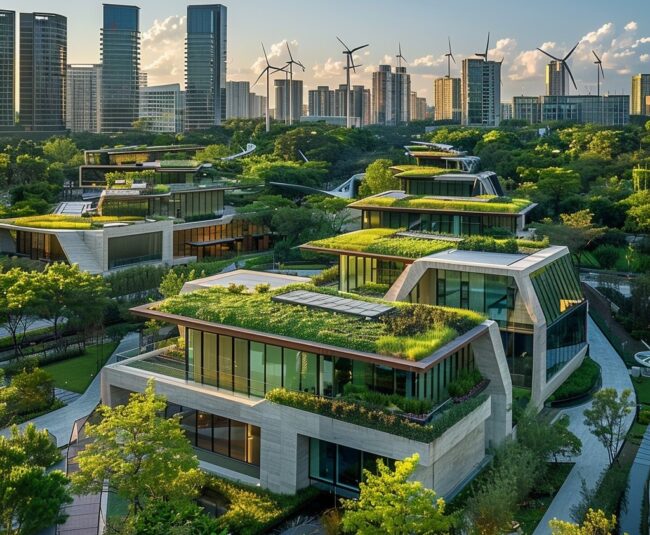
Cost Savings
One of the biggest reasons to consider green home remodeling is the substantial long-term cost savings. While some green technologies require some upfront cash, they pay off with lower energy consumption and reduced maintenance costs.
Beyond immediate savings, updates bring long-term financial bonuses: increased home systems’ durability and reduced repair frequency. Over time, all energy-efficient choices increase comfort and build equity in your property. Sustainability is a smart investment that pays dividends for your wallet and the planet.
The demand for eco-friendly and energy-efficient homes is influencing the real estate market in the United States.
Data to Confirming Benefits of Investing in Green-home Remodeling
Here are some key statistics and findings concerning the increased home values associated with sustainable features:
National Statistics
- Homes that are LEED certified or have ENERGY STAR ratings sell for 2-8% more than conventional homes. For the average U.S. home sold in 2022, this translates to a premium of approximately $17,000.
- Green homes in California increased in value by $34,800, or roughly 9%, compared to similar non-certified homes.
- Eco-friendly homes sell on average 9 days faster than traditional homes, with ENERGY STAR-rated homes selling even quicker, averaging 89 days faster.
- 48% of real estate agents reported an increasing priority among homebuyers for energy efficiency features in their searches.
- Due to reduced energy costs, green building techniques yield an ROI of 20% or more.
Illinois-Specific Statistical Data
- Buyers in Illinois are willing to spend an additional $50,000 for eco-friendly homes that promise long-term energy savings.
- About 60% of real estate professionals in Illinois see value in promoting energy efficiency in listings, reflecting a broader trend towards sustainability in home-buying decisions.
In summary, both nationally and within Illinois, eco-friendly and energy-efficient homes are more expensive and sell faster than their traditional counterparts, driven by increasing consumer awareness and demand for sustainable living options.
Energy-Efficient Appliances and Lighting
Energy-efficient appliances and lighting save a lot on monthly energy bills and free up cash for other purposes. They show your commitment to preserving the planet for future generations. Appliances that limit energy consumption burn fewer fossil fuels, which means fewer harmful emissions into the air.
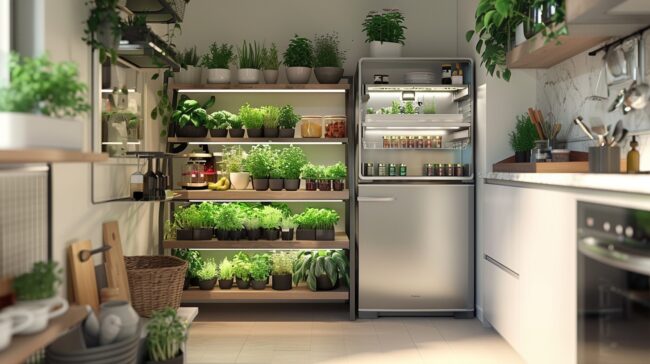
Additionally, as energy-efficient technology improves, appliances are packed with handy features that make life easier.
1. Energy-Efficient Appliances
- Details: Upgrading to appliances with high energy efficiency reduces electricity consumption without compromising performance.
- Cost: Energy-efficient appliances may have higher upfront costs compared to standard models.
- Installation Time: Typically aligns with standard appliance installation timelines, ranging from a few hours to a day per appliance.
- Savings: Energy-efficient appliances lead to substantial savings on electricity bills. For example, upgrading to LED lighting will save households up to 75% on lighting expenses, approximately $150 annually.
- 5-Year Savings: Approximately $750 per one component.
- 10-Year Savings: Approximately $1,500 per one element.
2. Energy-Efficient Lighting
- Details: Switching to LED lighting reduces energy consumption and extends bulb lifespan.
- Cost: LED bulbs have a higher upfront cost than CFLs and incandescent bulbs.
Installation Time: Replacing bulbs is straightforward and will be completed in minutes per fixture. - Savings: Replacing all the bulbs in your home with LED lights could reduce your annual carbon dioxide emissions by up to 35kg.
- 5-Year Savings: Savings will vary based on the number of bulbs replaced and individual usage patterns.
Renewable Energy Sources
Renewable energy sources extend energy efficiency and create a more sustainable living environment. Below are six eco-friendly systems we recommend installing in a green home. We give you remodeling costs for each and the savings you’ll enjoy after 5 and 10 years. If you put a price on all the benefits for our planet, savings will be 10, 100, or 1000 times higher.
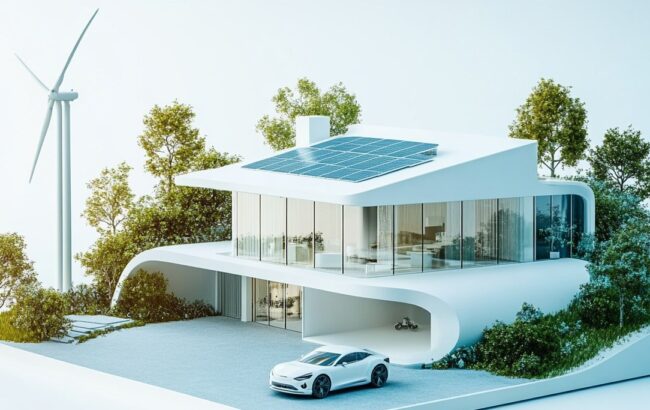
1. Solar Panels
- Details: Solar panels turn sunlight into electricity and provide clean energy directly from rooftops.
- Cost: $15,000 to $25,000 for a 6kW system, depending on panel type and size.
- Installation Time: 2 to 4 days, depending on system complexity and roof structure.
- Savings: Annual electricity bill reductions of about $1,500.
- 5-Year Savings: $7,500.
- 10-Year Savings: $15,000.
2. Geothermal Heating
- Details: Geothermal systems use stable underground temperatures to regulate indoor heating and cooling.
- Cost: $20,000 to $35,000, including excavation and heat pump setup.
- Installation Time: Several weeks due to digging and loop installation.
- Savings: Annual reductions in heating and cooling expenses of $1,000 to $2,000.
- 5-Year Savings: $5,000 to $10,000.
- 10-Year Savings: $10,000 to $20,000.
3. Small-Scale Wind Turbines
- Details: Wind turbines capture energy from consistent wind to generate electricity.
- Cost: $15,000 to $40,000, depending on turbine size and height.
- Installation Time: Several days to a week, based on site preparation and system design.
- Savings: Annual electricity savings of $1,000 to $2,000.
- 5-Year Savings: $5,000 to $10,000.
- 10-Year Savings: $10,000 to $20,000.
4. Micro-Hydro Generators
- Details: Micro-hydro systems convert flowing water into electricity and work well for homes with access to a water source.
- Cost: $10,000 to $25,000, depending on capacity and site characteristics.
- Installation Time: 1 to 3 weeks, based on site preparation and system requirements.
- Savings: Annual savings of $1,500 to $3,000.
- 5-Year Savings: $7,500 to $15,000.
- 10-Year Savings: $15,000 to $30,000.
5. Biomass Energy
- Details: Biomass systems rely on organic materials like wood pellets or agricultural waste for heating or power.
- Cost: $5,000 to $20,000, depending on system size and fuel type.
- Installation Time: Several days to a week.
- Savings: Annual heating cost reductions of $500 to $1,500.
- 5-Year Savings: $2,500 to $7,500.
- 10-Year Savings: $5,000 to $15,000.
6. Battery Storage
- Details: Battery systems collect excess energy from renewable sources and ensure power availability during peak demand.
- Cost: $10,000 to $15,000 for a 10kWh system.
- Installation Time: One day, often paired with a solar panel setup.
- Savings: Additional reductions of $500 to $1,000 annually when combined with other energy systems.
- 5-Year Savings: $2,500 to $5,000.
- 10-Year Savings: $5,000 to $10,000.
Water Conservation Techniques
Many of us take water for granted. Conserving it benefits the environment, reduces utility bills, and guarantees future generations have access to clean water. Water-saving methods make a big impact without sacrificing comfort or convenience. Whether installing efficient fixtures, capturing rainwater, or upgrading your landscaping, the techniques we listed below are practical and affordable.
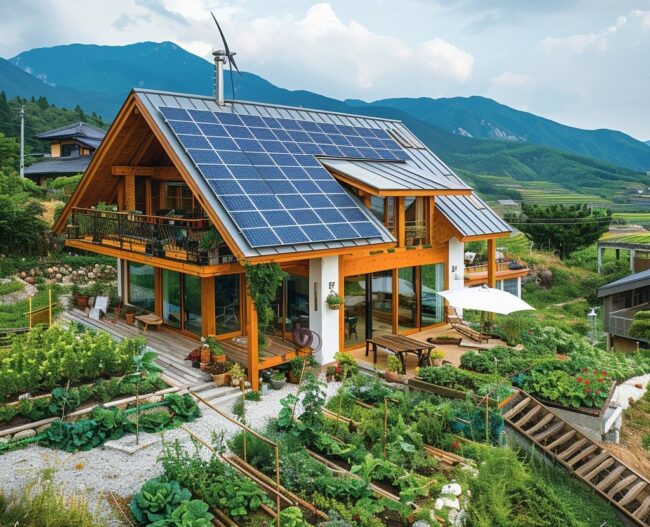
1. Low-Flow Fixtures
Description: Replace standard faucets, showerheads, and toilets with low-flow versions that reduce water use while maintaining performance.
- Benefits: Lowers water bills, reduces strain on water supply systems, and decreases energy usage for hot water.
- Cost: $50–$300 per fixture.
- Time to Install: 1–2 hours per fixture.
- Savings: Can cut water usage by 20–60%, saving up to $150 annually per household.
2. Fix Leaks
Description: Address common leaks in faucets, toilets, and pipes.
- Benefits: Prevents water waste and reduces utility costs. A single dripping faucet wastes thousands of gallons per year.
- Cost: $0 (DIY) to $200 (professional repair).
- Time to Fix: 1–2 hours per leak.
- Savings: Stops up to 10,000 gallons of waste annually, saving $20–$50 per year.
3. Efficient Appliances
Description: Upgrade to water-efficient dishwashers and washing machines.
- Benefits: Reduces water and energy use, cutting utility bills. Modern machines use up to 50% less water.
- Cost: $500–$1,500 per appliance.
- Time to Install: 1–2 hours per appliance.
- Savings: Saves $50–$100 annually in water and energy costs.
4. Smart Irrigation Systems
Description: Install irrigation systems that adapt to weather and soil moisture to prevent overwatering.
- Benefits: Reduces outdoor water waste and promotes healthier landscaping.
- Cost: $500–$2,000.
- Time to Install: 1–2 days.
- Savings: Saves up to 30% on irrigation costs, translating to $60–$200 annually.
5. Drip Irrigation
Description: Delivers water directly to plant roots, reducing evaporation and runoff.
- Benefits: Maximizes water efficiency for gardens and landscapes.
- Cost: $300–$1,000 for a typical yard.
- Time to Install: 1–2 days.
- Savings: Cuts water usage by up to 50%, saving $50–$150 annually.
6. Drought-Tolerant Landscaping
Description: Replace grass lawns with native plants and xeriscaping.
- Benefits: Reduces water needs, lowers maintenance, and supports local ecosystems.
- Cost: $1,500–$5,000, depending on yard size.
- Time to Install: 1–2 weeks.
- Savings: Cuts outdoor water use by 50–75%, saving $100–$300 annually.
7. Rainwater Harvesting
Description: Collect and store rainwater for non-potable uses like irrigation.
- Benefits: Reduces reliance on municipal water and provides a sustainable water source.
- Cost: $500–$2,000 for a basic system.
- Time to Install: 1–2 days.
- Savings: You can conserve up to 1,000 gallons annually, reducing water bills by $10–$50 annually.
8. Greywater Systems
Description: Reuse water from sinks, showers, and laundry for irrigation or toilet flushing.
- Benefits: Reduces demand for freshwater supplies and lowers water bills.
- Cost: $2,000–$6,000.
- Time to Install: 3–5 days.
- Savings: Recycles up to 20,000 gallons annually, saving $100–$300 per year.
9. Rain Gardens
Description: Create landscaped areas designed to absorb and filter rainwater.
- Benefits: Reduces runoff, improves groundwater recharge, and supports native wildlife.
- Cost: $1,000–$3,000.
- Time to Install: 3–7 days.
- Savings: Minimizes runoff management costs and reduces water use for irrigation.
10. Permeable Surfaces
Description: Replace traditional pavement with permeable materials to allow rainwater to soak into the ground.
- Benefits: Reduces runoff, decreases flooding risk, and promotes groundwater recharge.
- Cost: $2,000–$6,000, depending on the area.
- Time to Install: 3–7 days.
- Savings: Reduces stormwater management costs and enhances landscape health.
Combine as many water conservation techniques as possible to improve your home’s “greenness,” lower utility costs, and reduce your environmental footprint. Partner with a remodeler to incorporate all the upgrades and maximize the benefits for you and the planet.
If unsure which improvements and eco-friendly solutions are optimal for your family and home, we’ll explain each and strategize with you to achieve the most within your budget.
Sustainable Materials for Green Remodeling
Sustainable materials are produced or harvested in ways that minimize environmental impact, reduce waste, and conserve natural resources. They are renewable, recyclable, or made with eco-friendly processes. Examples include bamboo, reclaimed wood, recycled metal, cork, and low-impact composites.
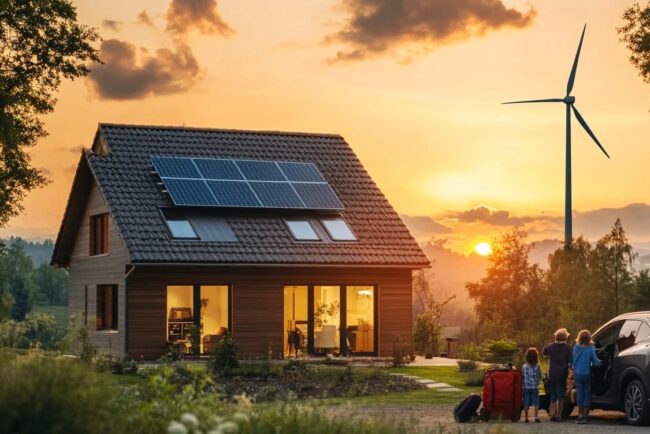
General Benefits of Sustainable Materials
- Eco-Friendliness: Sustainable materials reduce pollution and resource depletion. They minimize carbon footprint, which is good for the environment.
- Energy Efficiency: Many sustainable options improve energy use, such as cork insulation or energy-efficient windows. Besides that, they regulate indoor temperatures, decreasing heating and cooling costs.
- Longevity and Durability: High-quality sustainable materials, such as reclaimed wood or recycled steel, are more durable than traditional alternatives. They last longer and require less frequent replacement.
- Healthier Indoor Air: Some materials, like low-VOC paints or finishes, do not release harmful chemicals, improving the air quality in the home and creating a safer environment for the family.
- Cost Savings Over Time: While sustainable materials may have higher initial costs, their energy savings, durability, and reduced maintenance make them more inexpensive in the long run.
- Increased Home Value: Homes designed with eco-friendly materials have higher resale values. Buyers are increasingly drawn to properties with energy-efficient and sustainable features.
- Support for Ethical Practices: many sustainable materials are sourced through fair trade or responsible harvesting practices, contributing to ethical global trade.
- Aesthetic Lure: Reclaimed wood or natural stone offer unique textures and designs that enrich the home’s beauty.
5 Sustainable Materials We Recommend
Here’s a detailed explanation of five sustainable materials tailored for someone managing a home project.
1. Bamboo Flooring
- What It Is: Bamboo is a type of grass that grows extremely fast—much quicker than trees used for traditional hardwood flooring. Once harvested, it’s processed into planks that look and feel like wood.
- Why It’s Good for Your Home: It’s strong, lasts a long time, and gives your home a clean, modern look. Unlike hardwood, bamboo is considered a renewable resource since it grows back in just a few years.
- Cost: $5–$8 per square foot. Installation costs depend on the installer, usually $3–$5 more per square foot.
- Benefits: Durable, scratch-resistant options available. Easy to clean, just like hardwood.
- Savings: Over time, it saves money because it’s less probable to need repairs or replacement compared to cheaper flooring options like laminate.
2. Recycled Steel
- What It Is: Steel made from scrap metal. Instead of mining for new materials, old steel is melted down and reused for construction, such as framing a home or creating support beams.
- Why It’s Good for Your Home: It’s one of the strongest materials available, so it’s perfect for homes that need extra structural support. Plus, it doesn’t rot or get damaged by pests like termites.
- Cost: Typically higher than wood framing—around $10–$20 per square foot, depending on market prices and the size of your home.
- Benefits: Doesn’t wear out or warp over time. Requires very little maintenance.
- Savings: Although it costs more upfront, its durability and low upkeep mean you won’t spend extra on repairs or pest treatments.
3. Cork Insulation
- What It Is: Cork comes from the bark of cork oak trees, which regrows after harvesting. It’s ground up and made into sheets or rolls for insulation inside walls or attics.
- Why It’s Good for Your Home: Cork keeps your home warm in winter and cool in summer. It also blocks noise, so it’s great if you live near a busy street or want a quieter house. It’s naturally resistant to mold and pests.
- Cost: $1.10–$3.30 per square foot. Installation can add another $1–$2 per square foot.
- Benefits: Your home stays energy-efficient, meaning you use less heating and cooling.
- Savings: Cuts your energy bills by about 15% annually because your heating and cooling systems won’t have to work as hard.
4. Reclaimed Wood
- What It Is: The wood salvaged from old buildings, barns, or furniture that gets repurposed for new projects like floors, walls, or furniture.
- Why It’s Good for Your Home: Reclaimed wood has a lot of character—it often has a weathered look or unique grain patterns. It’s more durable because it comes from older trees that grew slower and are stronger than modern lumber.
- Cost: Prices vary. Some places charge as little as $5 per square foot, while others charge $20 or more for rare, high-quality pieces.
- Benefits: It’s eco-friendly because it reduces the demand for new trees. Plus, every piece tells a story—maybe it came from an old barn or a historic building.
- Savings: May qualify for certain local tax breaks or credits. Its long-lasting nature means you won’t need to replace it for decades.
5. Low-VOC Paints
- What It Is: Paints labeled as “low-VOC” contain fewer Volatile Organic Compounds (VOCs), which are chemicals that cause strong odors and contribute to indoor air pollution.
- Why It’s Good for Your Home: VOC paints are safer for your family, especially children or anyone with allergies. They improve the air quality in the house and don’t have lingering “paint smell.”
- Cost: $30–$60 per gallon, compared to $20–$30 for standard paints. A typical room requires 2–3 gallons.
- Benefits: A healthier environment at home, especially in bedrooms or kitchens. Comes in a variety of colors and finishes, just like regular paint.
- Savings: While it doesn’t save on bills directly, it reduces long-term health-related costs by avoiding exposure to harmful chemicals.
Remodeling with smart materials is a wise investment because they last longer, reduce utility costs, and protect the planet for future generations.
Points to Consider with Your Remodeler
Assessment and Planning
Work closely with your remodeler to evaluate the property’s unique characteristics and determine which renewable energy systems align with your needs. This involves:
- Site Suitability: Identify areas ideal for solar panel placement, such as rooftops with optimal sun exposure, or evaluate wind conditions for turbines.
- Energy Use Analysis: With a remodeler, review current energy consumption patterns and estimate the amount of energy each system provides.
- Property Characteristics: Consider elements like land size for geothermal loops, water flow availability for micro-hydro systems, and storage capacity for biomass fuel.
Permits and Codes
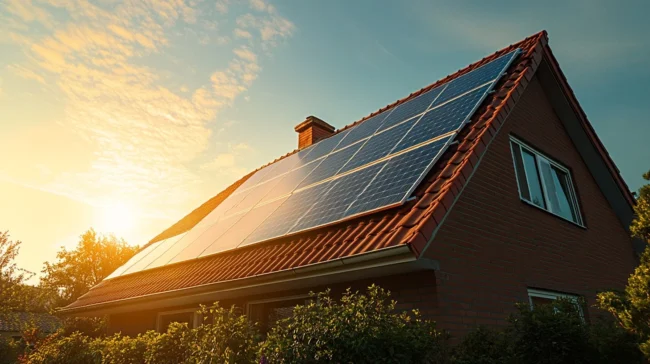
Your remodeler should manage the permitting process and provide compliance with local building codes, which greatly vary depending on location. Key steps include:
- Permitting: You’ll need permits for structural modifications, such as digging for geothermal loops, erecting wind turbines, or installing micro-hydro generators.
- Regulations: Installations must meet local zoning laws, environmental requirements, and electrical standards.
- Inspections: Inspectors during and after installation must confirm everything adheres to the code.
An experienced remodeler simplifies legalities and saves time.
Incentives to Lower Remodeling Costs
There are federal and local financial incentives to offset initial costs, including:
- Federal Tax Credits: Programs such as the Investment Tax Credit (ITC) for solar and geothermal systems reduce costs by up to 30%.
- State and Local Rebates: Identify state-specific incentives, such as grants or rebates for renewable energy installations.
- Utility Company Programs: Check with local utility providers for net metering options, where excess energy is credited to your account.
Illinois and Chicago offer various incentives to promote energy efficiency and renewable energy adoption. Here are some programs that may benefit your remodeling project:
Illinois State Incentives
- Illinois ENERGY STAR® Appliance Rebate Program provides rebates for purchasing energy-efficient appliances, including HVAC equipment, water heaters, and household appliances.
- Illinois Solar for All offers incentives to income-eligible households, non-profit organizations, and public facilities to install solar energy systems, aiming to make solar installations more affordable.
- Energy Efficiency and Conservation Block Grant (EECBG) Program, administered by the Illinois EPA Office of Energy, this program provides funding to municipalities and counties for energy audits and government energy efficiency building upgrades.
City of Chicago Incentives
- Retrofit Chicago: A city initiative that supports energy efficiency improvements in residential, commercial, and municipal buildings. Participants receive assistance in upgrading to more efficient systems and accessing financial incentives for priority projects.
- Sustainable Development Policy Incentives: Offers property tax deductions for energy-efficiency improvements involving interior lighting, heating, cooling, ventilation, hot water, and building envelopes.
Federal Incentives Applicable in Illinois and Chicago
- Energy-Efficient Home Credit (45L): Provides tax credits ranging from $1,000 to $5,000 per residential unit for EPA Energy Star-certified homes, including multifamily housing.
- Energy-Efficient Commercial Buildings Deduction (179D) offers tax deductions for energy-efficiency improvements in commercial buildings, including interior lighting, heating, cooling, ventilation, hot water, and building envelopes.
Pro tip:
- Consult with Your Remodeler: Discuss incentives with your remodeler to identify which programs align with your project goals and eligibility.
- Contact Relevant Agencies: For detailed information on application processes and deadlines, contact the Illinois EPA Office of Energy and the City of Chicago’s sustainability departments. Illinois EPA Office contact info:
- 1021 North Grand Ave. East, P.O. Box 19276, Springfield, IL 62794-9276
- (217) 782-3397
- Stay Updated: Incentive programs are constantly changing. Update your knowledge at least once a month to stay current and maximize your benefits.
With your remodeler’s guidance, the administrative work for claiming incentives will be streamlined, maximizing your financial benefits.
When you work with us, we’ll guide you through every stage of the green home remodeling process (if you want). Together, we’ll create an energy-efficient home that saves money over time, aligns with your vision, and contributes to preserving our world.



